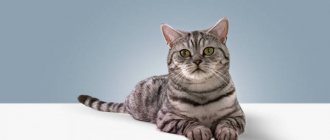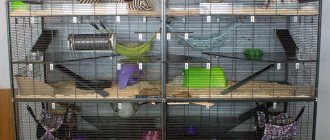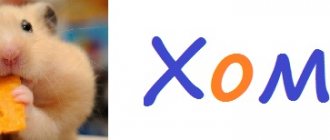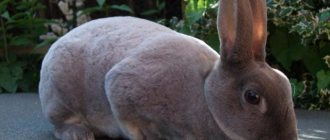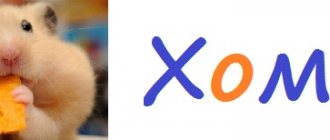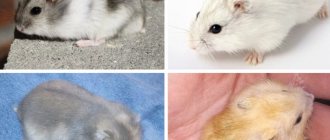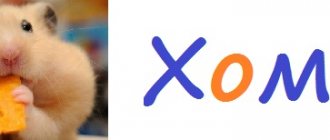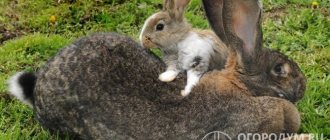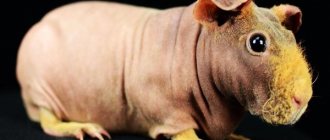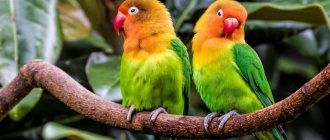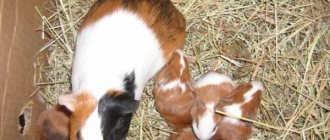British cats are one of the most sought after pets. Not only shorthaired cats have gained worldwide popularity, but also their furry relatives - British Longhairs, or Highlanders. A cute face, thick, long hair with a fluffy tail and a golden cat character are three reasons to fall in love with this breed.
History of British Longhair cats
The past of the Lowlanders cannot be called ancient, much less glorious.
The breed arose due to a recessive gene for long hair, the carriers of which, according to felinologists, should not have been allowed to reproduce. Moreover, the breeders themselves were to blame for the genetic failure; in the mid-50s they wanted to expand the color palette of British shorthairs by crossing them with Persians. At first, everything went according to plan: kittens born from mixed “marriages” inherited the luxurious colors of Persian cats and the short hair of their English parents. However, after several generations, the “increased fluffiness gene” made itself felt, and the animals began to bear long-haired offspring. Breeders were not prepared for such a surprise, so at first they strictly rejected fluffy kittens, selling them for a symbolic price, or even for free, provided that no one would breed such pets.
Soon, the longhaired variation of the British found a few fans who began to “push” the breed into the TICA and WCF breeding lists. But since the British cats were distinguished from their English ancestors only by their voluminous fur coats and nothing more, some felinological clubs in Europe and the USA continued to register them as a variety of British cats. At the same time, TICA recognizes Lowlanders, although for now in the status of a new breed.
Important: today, crossing Persians with British shorthair and longhair cats is prohibited. At the same time, matings between Lowlanders and traditional British are allowed by some clubs.
Origin story
Work on the Highlander breed (Highland Lynx) began in 1993. Breeders decided to “improve” an existing cat breed called the Desert Lynx by making its ears curled. For this, they used not an ordinary Curl, but a new hybrid breed called the Jungle Curl (a cross between the breeds: Jungle, American Curl, Epipetian Mau, Serengetti, Bengal and some others). The choice of Jungle rather than Curl is quite understandable; the breeders did not want to lose the spotted color characteristic of lynxes. Since May 2008, the breed has been recognized by the International Cat Association (TICA). Since 2016, he has the right to exhibit in the Advanced new breed class.
British Longhair breed standard
At first glance, the longhaired variation is distinguished from its British shorthaired cousins only by its more striking “outfit.” Moreover, if you take a closer look, it becomes clear that this is a rare case when the first impression is not deceptive. Perhaps this is why TICA did not begin to draw up a separate standard for the breed, but simply slightly modified and adjusted the existing version intended for British Shorthairs.
Head
The British Longhair is a medium to large sized cat with a round, cheeky face. The animal's chin is voluminous, the bridge of the nose is flat, short, and practically without a stop. The vibrissae of representatives of the breed are clearly marked, convex, rounded in shape.
Eyes
The large, round eyes are moderately wide apart, and the color of the iris matches the color of the coat. The exception is silver-colored individuals, for whom a rich green iris tone is preferred.
Neck
The thick, muscular, short neck extends into round cheeks. In mature cats and cats, this part of the body expands in width, so it seems that there is no neck as such.
Ears
The ears of the British Longhair are small to medium in size, set on the sides of the rounded cat's skull without becoming splayed out. The base of the ear is wide, the tip is moderately rounded.
Body
The body of the British Longhair cat is powerful, wide, and smoothly rounded in outline. The chest is also massive. The back is straight, the sides look voluminous.
Limbs
The legs of representatives of the breed are of moderate length, strong and strong. The paws are thick and large. The animal itself looks squat, but not short.
Tail
Both shorthaired and longhaired Britons boast thick, medium-length tails with an elegantly rounded tip.
Color
The purebred Lowlander has the same colors as its shorthaired cousin, that is, solid, tortoiseshell, smoke, tabby, bicolor.
Wool
The coat is semi-long type. The hair is dense, elastic, not tight. It is desirable to have a richly pubescent collar area and panties. But the pronounced wooliness of the coat, as well as thin long hair with a hint of the airiness inherent in Persians, are rejected.
Disqualifying faults
Disqualifying defects mean defects in behavior and appearance that call into question the breed of the animal. These in British longhair cats include: jaw distortion, skin pigmented in tones that do not match the overall color, incorrect eye color, as well as an unreasonably aggressive reaction in response to the action of exhibition specialists. Poor physical shape, as well as severe pain, are also considered sufficient reasons to deny a pet and its owner entry into the ring.
Description and appearance
Highlander cats are medium to large in size. The animal's body weight is 5-8 kilograms. The main breed standards are those given in the table:
| Part of the body | Description |
| Head | Wide, with a powerful chin |
| Muzzle | Flattened, rounded |
| Cheeks are rounded | |
| The mustache pads are expressive. | |
| Ears | Small, round at the ends |
| Located quite extensively and oriented strictly straight | |
| Eyes | Round, large, wide open |
| Shades come in a variety of colors | |
| Torso | Medium size, sometimes large |
| The chest is broad, the shoulders and back are powerful. | |
| Paws | Short, round and muscular |
| Tail | Dense, rounded at the end |
| Wool | Dense with perfectly formed undercoat |
| Smooth, plush, soft touch | |
| A tight collar and pants are desirable. | |
| Color | The breed standard allows a variety of shades |
| Often found: black, white, red, blue coat color, also color point, silver and golden chinchilla |
Personality of the British Longhair cat
The longhaired British cat is the embodiment of delicacy and peacefulness itself. Actually, for these character traits alone, representatives of the breed can be recommended to owners who want to have a problem-free pet next to them, to whose whims they do not have to adapt. Lowlanders are extremely moderate in their preferences and do not cross the line beyond which misunderstandings and friction with the owner begin. For example, furry intellectuals adore human company, but in his absence they do not fall into depression, preferring to quietly philosophize on their favorite couch or armchair. By the way, breeders who have many years of experience in breeding the breed claim that the character of their charges is more docile and good-natured than that of short-haired British cats.
Kittens also experience attacks of mild melancholy, during which they are reluctant to contact the owner and members of his family. During such periods, it is better not to pester your pet, giving him the opportunity to take a slight break from communication - don’t worry, this withdrawal will not last long. Morning oratorios while waiting for breakfast are also not about the British. From time to time, English “gentlemen” are able to remind themselves with a quiet, slightly rolling “meow”, but they certainly will not scream to attract attention or in confusion of feelings.
But the long-haired Briton will not refuse to play, and this comrade perceives with equal delight both entertainment in the company of a person and the independent “torment” of a wind-up mouse or ball. As they grow up, British Longhairs become more phlegmatic and slow down in terms of physical activity, so anyone who is scared of hurricane cats, dashingly diving from the closet to the sofa and overturning flower pots of any weight, can get such a pet.
Purrs treat children patiently and condescendingly, provided that the latter do not annoy the animal too much with their attention. When bringing a British Longhair cat into your home, inform your children that the breed does not like strong hugs, nor does it like a noisy, nervous environment. We are ready to tolerate lowlanders and the presence of dogs. True, in order for the relationship between the dog and the representative of the purring brethren to become extremely peaceful, it is better that acquaintance and getting used to each other take place at a young age.
Character of the breed
Kittens are playful and inquisitive, which cannot be said about adults: older Britons will prefer the sofa to any interesting game.
Highlanders are difficult to piss off. These are very calm and balanced cats. They love solitude and rarely need to communicate with members of their household. Non-conflict: calm towards other pets in the house.
Cats are smart by nature, and therefore raising them and teaching them order will not take much time. The restraint of this breed of cats is surprising: even with severe hunger, the cat will not bother you with meows, begging for food, but will simply sit by an empty bowl.
Cats have a cool calmness. They are humble about crowds when participating in exhibitions. A trip to the veterinarian will also be accepted with equanimity.
They are affectionate, but prefer to sit next to their owner. They are not given in hand. They can withstand the attention of children, although lifting a 5-7 kilogram carcass will be very problematic for a child.
Education and training
The British are not the most energetic breed, so it is not advisable to practice circus acts with them in the “we are from the Kuklachev Theater” style. But it is necessary to correct the cat’s behavior by instilling in him the norms of household etiquette. Moreover, after a year, lowlanders lose their thirst for knowledge and stubbornly refuse to re-educate.
At first, special literature will help out - the books “Raising Kittens” by E. Filippova, “Bad Habits of Cats. Parenting without stress” by A. Krasichkova and others. If the kitten came from a breeder who did not bother to instill in him toilet skills, get ready to take on this work yourself. Fortunately, British Longhairs are naturally clean and quickly realize that it is much more pleasant to do “wet things” in a pile of dry litter than on a slippery floor.
Be sure to take into account the subtle mental organization of the breed - British breeds tend to keep silent and absorb grievances, which negatively affects their psyche. So if at first the cat makes mistakes and goes to the toilet in the wrong place, it is better to close your eyes to the odorous “pools” and try alternative methods of litter training - put a cloth in the box that smells of cat urine, or rustle the litter in the presence of the kitten. And, please, no grandma’s methods that involve poking the baby’s nose into a puddle - no matter what home-grown experts in cat psychology say, such educational moments do nothing but harm. Remember, the kitten is not able to endure for long and often forgets which room its toilet is in, so at first it is recommended to place a couple of trays in the house to avoid “wet incidents”.
British longhair cats are greedy for positive incentives, so for any achievement, praise your ward from the bottom of your heart. True, here it is important to distinguish between actual achievements and norms of behavior. If for once the cat ignored the sofa and did not sharpen its claws on its back, this is not a reason to rush for a tasty reward for it.
It is better to keep punishments to a minimum, but if the purr begins to become impudent and encroach on the forbidden, the prankster will have to be put down. The best method of influence is considered to be intonation highlighting. If you categorically and firmly say “No!” the cat sitting on the table, at the same time tapping his palm on the tabletop, he will understand this. Don’t even consider spanking your pet with newspapers, your hand, or a slipper that has turned up - you can’t hit any cat, let alone an intelligent and impressionable British Longhair.
How to feed your pet correctly
When choosing food, the question arises, which is best to choose, here the choice depends on the owner himself, in this case there are no prohibitions, so you can give preference to both dry food and regular food.
Ready-made food differs from natural food in that it is balanced and completely accessible. In addition, there is no need to worry about the mineral complex, since it is already included in the dry food. Of course, if it is super premium food.
For those who choose natural nutrition, you should choose the following products:
- Turkey, chicken, lamb, cow meat;
- Offal (boiled);
- Milk products for kittens;
- Quail eggs.
You can occasionally add fish, buckwheat and rice little by little to the meat, as well as boiled vegetables (carrots, pumpkin, zucchini). Milk is given only from birth to six months; it cannot be given further, since cats do not produce enzymes that can break down protein. You should not forget about the mineral supplements that your pet needs.
For up to 4 months, representatives of this breed are fed four times a day, after which they smoothly switch to 2-3 meals a day.
Maintenance and care
Toys, a sisal scratching post, a bed, bowls for food and drink - property that any cat owner should have. It is important to promptly change the litter in the toilet of a British longhair cat. Representatives of this family are demanding cleanliness and will never go into a tray with the products of their own vital activity. If desired, you can buy a gaming set for your pet, and it doesn’t have to be a high one - the breed does not suffer from a mania for conquering peaks. At least once a day, it is advisable to take your cat outside to get some fresh air, or set up a corner on a net-covered balcony where she can replenish her stock of impressions.
Hygiene
The elastic, lagging hair of the British Longhair differs from the hair of Persian cats, so it does not tangle as easily and does not become tangled. However, you will have to brush your pet at least once a week. Individuals who permanently live in the house shed not seasonally, but throughout the year, so if you notice that your cat’s fur is shedding more intensely than usual, it is better to increase the frequency of brushing.
The eyes of British Longhairs are sensitive and may leak, which is especially noticeable in kittens. There is no need to make a tragedy out of this phenomenon, just remove the mucous lumps with a clean cotton swab dipped in phytolotion, not forgetting to monitor the intensity of the discharge. If your eyes are leaking too much, this is not a reason to grab strong anti-inflammatory drops without consulting a specialist, since there is a risk of worsening the situation.
Lowlanders' claws, like their short-haired relatives, grow unevenly. Breeders recommend shortening the claws on the front paws once every 2-3 weeks, and on the hind paws no more than once a month. It is necessary to clean your ears as they become dirty, without falling into perfectionism. That is, if a cat has secreted a large amount of secretion, it is removed with a cotton pad soaked in hygiene lotion or hydrogen peroxide. If there is little sulfur, it is better to close your eyes to its presence, since the more often the ear is cleaned, the more intensely the excretory glands work.
If your pet does not eat dry food, which acts as an abrasive for teeth, be prepared to systematically clean its oral cavity with a zoopaste and a brush. The British Longhairs themselves do not respect such actions, so it is often necessary to involve a second person for processing, and sometimes to “swaddle” the animal so that it does not interfere with the process of neutralizing food plaque.
An alternative to classic brushing is a liquid toothbrush. This is the name for special solutions added to drinking water and performing the function of a disinfectant and plaque dissolving agent. In particularly advanced cases, when your pet has acquired tartar, you will have to contact a veterinarian. But since in zoos such procedures are often carried out under anesthesia, it is better not to neglect regular home cleaning.
Feeding
There are no strict instructions requiring that a British Longhair cat be fed only dry or natural food, so each breeder chooses his own ideal option. The main advantage of industrial feeds over natural products is their balance and availability. A purr “sitting” on dry food does not need additional vitamins, however, provided that it is food of at least super-premium class.
The natural menu of longhaired British cats traditionally includes:
- turkey, lamb, beef and chicken meat, heat-treated or frozen;
- boiled offal;
- fermented milk products and milk (only for kittens);
- quail eggs.
It is better to give fish less often and in the form of boiled fillets, since some types contain substances harmful to the cat’s body. Cereals (buckwheat, rice) are mixed with meat in limited quantities. Do the same with boiled and raw vegetables - pumpkin, carrots, zucchini. Quail eggs can be replaced with chicken yolk. You can also cook an omelet with it.
For up to six months, milk is present in the diet of British Longhair kittens, but then its consumption should stop - the body of an adult animal does not produce enzymes that break down milk protein. Be sure to grow it on the windowsill or buy young grass for the cat - with its help the animal gets rid of hairballs that got into the stomach when licking the body.
It is useful to periodically feed cats on a natural diet with vitamins and complexes with taurine, but it is better if they are prescribed by a veterinarian after an examination. Some breeders introduce homemade dietary supplements into the diet, such as rosehip and nettle infusions, although they are not always able to cover the pet’s need for microelements and vitamins. Three-month-old British cats are fed up to four times a day; six-month-old individuals are transferred to a two- or three-time diet.
Life of a long-tailed cat in captivity
Margai is a wild beast, although he has a cute appearance. Such animals have clearly developed appropriate behavior, so they are not adapted to home life. Any small animal in the house will definitely become margay’s prey. Even a small dog can suffer from the claws and teeth of a wild cat. Therefore, representatives of the species living in captivity can be found in zoos.
To properly raise a margay, it must be adopted at an early age.
Features of caring for a predator
Of course, the main requirements for keeping a wild cat are safety measures. All windows and doors must be protected with metal mesh. This will protect not only the owner of the house and his children, but also the cat itself. The animal may leave home and not return. If we are talking about cool regions of Russia, then the animal faces almost one hundred percent death from hypothermia in the first autumn. If we are talking about a relatively warm and humid climate, then in the courtyard of the house you can install a special enclosure covered with a high mesh. However, even in such an enclosure you need a warm house for the cat. In the absence of a house, the cat will have to be brought home at night.
If margay is raised correctly, he can go into your arms
Such a cat needs to be fed meat with small bones (beef, chicken, feed mice and offal). Such food is very similar to prey that a cat could catch in the wild. In addition, the cat needs to be given vitamins and special supplements. Usually people who dare to purchase such an exotic pet communicate closely with veterinarians. Only special skills and knowledge of animal medicine will allow you to raise and educate a wonderful cat.
Video: Margay named Maya eats meat
There have been cases when long-tailed cats lived their entire lives next to humans. True, the behavior of such an animal is more similar to the behavior of a dog. A tamed margay fussily stomps on its owner’s chest and licks his face. I heard that wild cats can even protect their owner and growl at offenders if there is any threat from them.
Health and disease of British Longhair cats
Longhaired British cats live up to 18-20 years. They have few health problems, but given the developing status of the breed, it is logical to assume that some of the ailments may manifest themselves over time. In the meantime, diseases such as hypertrophic cardiomyopathy and polycystic kidney disease cause discomfort to cats. As for obesity, to which diligently fed individuals are prone, it is easier to combat it in the early stages. Neglected fat cats manage to accumulate a sufficient number of serious ailments, including arthritis, diabetes and hepatic lipidosis.
Choosing a kitten and its price
The longhaired British breed has many fans, so getting a kitten will not be a problem. Please note that the price of a cat is always cheaper than a cat. Also, the cost will depend on the color, purity of the pedigree (presence of Persians), and the status of the nursery. Kittens with appropriate documentation are more expensive.
There is a division into classes: show, breed and pet. Exhibition representatives are more expensive than usual, their price starts from 15,000 rubles. An ordinary kitten for home can be found through private advertisements from 3,000 rubles. Be careful when choosing and beware of scammers. Look at the parents and the rest of the kittens. Make sure you are paying for a British Longhair and not just a fluffy kitten.
How to choose a kitten
- As the breed continues to gain popularity, buyers will encounter unscrupulous sellers selling problem animals. In order to purchase a kitten, it is better to go to breed exhibitions where professionals gather.
- Fans of more playful pets are advised to opt for a male kitten. Long-haired “British girls” are calmer and more phlegmatic than males.
- Look for a nursery registered in the WCF felinological system - such institutions value their reputation and do not breed animals without pedigrees. In addition, the websites of most of them contain photos and documents of the producers, from which you can get a relative idea of the appearance of future litters.
- British Longhair kittens are sold starting from the age of three months. If the breeder offers to give the baby away earlier, there is a catch.
- In three-month-old kittens, the exterior potential is practically not visible, so for exhibitions it is better to take older individuals (4-6 months), whose iris color has been determined and the first moult has passed.
- Assess the living conditions of the cat and its offspring. The nursery should be clean and warm, and the animals should look healthy and well-groomed.
- Browse advertisements for the sale of child support children. They are given by cat owners who receive a kitten as payment for mating their ward with a cat from the nursery. Buying such kittens is quite acceptable, especially since the maintenance animal is given away first, and is usually the cutest kitten in the litter. The main thing is to check the purity of the parents’ pedigrees.
Breed cost
The British Longhair cat is a popular breed, so finding a cattery or breeder is not difficult. Individuals on sales sites should be treated more closely. It is difficult to judge the purebred cat breed from a photograph; it is better to see the kitten and its parents in person. Another equally important question is the cost of the kitten. The price depends on the following factors:
- Floor. Cats are a little more expensive than female cats.
- Class (pet, brit, show, ascending price respectively).
- Parents' pedigree.
- Color.
- Prestige of the nursery, breeder from whom you plan to purchase.
The most expensive show-class kitten, intended for exhibitions and breeding, costs approximately $1,500-2,000. For a small price you can get a “defective” fluffy Briton who was born from short-haired parents with a recessive gene for long hair.
Choosing a kitten
It is recommended to purchase kittens at the age of 3-4 months. They are already accustomed to the tray, scratching post and vaccinated with the vaccine appropriate for their age.
Before buying a pet, you should decide for what purpose you are purchasing a British dog. For participation in exhibitions and breeding of the breed, the show class or breeding class with minor flaws in appearance is ideal. The Pet class is suitable as a stay-at-home pet, because... it is not allowed in exhibition events due to serious deviations from breed standards and is subject to mandatory castration, preventing breeding activities.
A kitten without papers is temptingly inexpensive, but there are no guarantees about its purebred. Only a specialist can name the class, but you can determine the purebredness of a kitten yourself by the characteristics characteristic of British cats:
- Round head with a wide forehead.
- Chubby cheeks.
- Small rounded ears.
- Medium-sized nose with no visible transition in the eye area.
- Fluffy elongated coat.
You can verify the purebred in another way - please provide the relevant documents: birth certificate, pedigree, veterinary passport and others. The third option is to look at both or one of the baby’s parents. The health of the cat is an important criterion for choosing a pet:
- Active, curious.
- Neat appearance with shiny coat.
- Clear, clean eyes without discharge.
- Skin without damage.
- Clean ears without plaque.
Interesting Facts
Although the Highlanders do not have a rich history, many interesting things have been associated with them:
- The name of the breed Highland Lynx translates as “mountain lynx”. And in some sources these cats are referred to as shorthaired Highlanders.
- Due to the similar name, representatives of the breed are often confused with Highland Folds. But they are in no way related to the British and Scottish Longhairs.
- Formally, Highland Links can be considered hybrids. But the percentage of wild blood present in them is so small that it does not affect anything at all. Therefore, genetically, Highlanders are completely domestic cats that do not pose a threat to people.
How much does a British kitten cost?
The price of a British Longhair cat can vary greatly. For example, in the States it will cost from eight hundred to twelve hundred dollars, if translated into our money, it will be from fifty to seventy-five thousand rubles.
- In the Russian Federation, the cost is almost the same, especially if further breeding is planned.
- But on the Internet you can also see a lower price - fifteen thousand rubles, which clearly indicates the dubiousness of the product.
- You should be vigilant and not fall for such tricks.
The British Longhair is a beautiful animal that will become not only a favorite pet, but also a decoration for any home. Caring for and maintaining this breed does not bring any problems. The pet will delight not only the younger members of the family, but also the adult generation.
Standard according to WCF version
Just a few years ago, the Scottish Fold Highland Fold was a rare occurrence in litters when two Scottish Shorthairs were mated. Now, many breeders are engaged in their breeding, who strive to preserve it.
Upon external examination, the presence of Persian blood becomes obvious - the eyes are close-set, the profile is smoothed, the coat is very soft.
According to the WCF standard, the Scottish Highland Fold must have a proportional body that is rounded and ends in a long tail.
It is very important that the tail is flexible, otherwise it will be considered a defect.
Their paws are round and their head is rounded. One of the distinctive features is the strong-willed chin and shortened nose.
The eyes are large and widely spaced. The Scottish Fold has a very dense and long coat that comes in different shades. Over time, it may become a little weak, but this should not be allowed, since according to the standard this will already be a drawback, albeit a small one.
Ears are pressed tightly to the head and directed downwards. They have several folds that make them stand out from other breeds. The number of folds affects the degree of curvature of the ear. So, in the third degree, the ear is pressed tightly.
The resulting estimates largely depend on the quantity and quality of such folds, because they are one of the indicators of this type. This breed can get the maximum number of points for its ears and tail. Therefore, you must carefully examine the kitten before picking it up from the breeder. In this case, the ears and tail are especially carefully checked.
Determination of purebredness occurs already in the third week after birth, when the kittens’ ears begin to curl.
A cat whose tail is found to have a hook on it or whose tail is too short and inactive will be disqualified. Also, abnormal bone changes and an unusual number of toes are not allowed. And the presence of diseases can often be one of the main reasons for the disqualification of a Highland
That is why it is important to carefully monitor his condition and feed him adequately.
Be careful even at the stage of choosing a kitten, because a thorough examination will allow you to choose a baby with good health and prevent many problems in the future. If you are a beginner and are not very well versed in all the features, then it is advisable to consult with a more experienced breeder in advance or read the relevant literature.
Pros and cons of the breed
Since Highland Links are not cheap, before buying a kitten you should analyze all the advantages and disadvantages of this breed:
ProsCons
| Cute appearance | The high cost of kittens |
| Low maintenance | Small number of nurseries |
| High intelligence |
Highlanders are beautiful short-tailed cats with original colors and unusual ears turned back. Their wild appearance is successfully complemented by a friendly and sociable disposition, which makes them an object of interest for many exotic lovers.
Exterior
Muscular, strongly built cats should look like lynx cubs - compact, strong and agile. The average weight is 7 kg, some cats reach 10 kg. The standard is preliminary, changes are made as the breed develops:
The head is triangular with a convex skull, rounded cheekbones. The forehead is high, the muzzle is short and blunt, and the anus are prominent. The nose is wide along its entire length, with well-open nostrils;
The Highlander's ears are medium set and vertical. Kittens are born with a straight ear, which bends back as they mature - typical Curl ears with a less tight curl;
The eyes are almond-shaped, medium in size, set wide and slightly slanted. The color of the iris is in the yellow, orange, green spectrum;
The body is of medium length, compact. The limbs are long and strong, especially the hind legs, causing the croup to be slightly elevated. Paws are round and large, extra toes are acceptable (polydactyly);
The tail does not reach the hock joints. It can be a very short curled bob to the impression of complete absence or a straight thick tail, shortened like a lynx;
Maine Coon
Korat cat
British Chinchilla
The coat comes in two types - short, thick with a dense undercoat or elongated, forming a frill, trousers, and tassels. The hairs are thick, rough, the undercoat is not cottony. Tabby colors - stripes, spots, marbles in any color.
